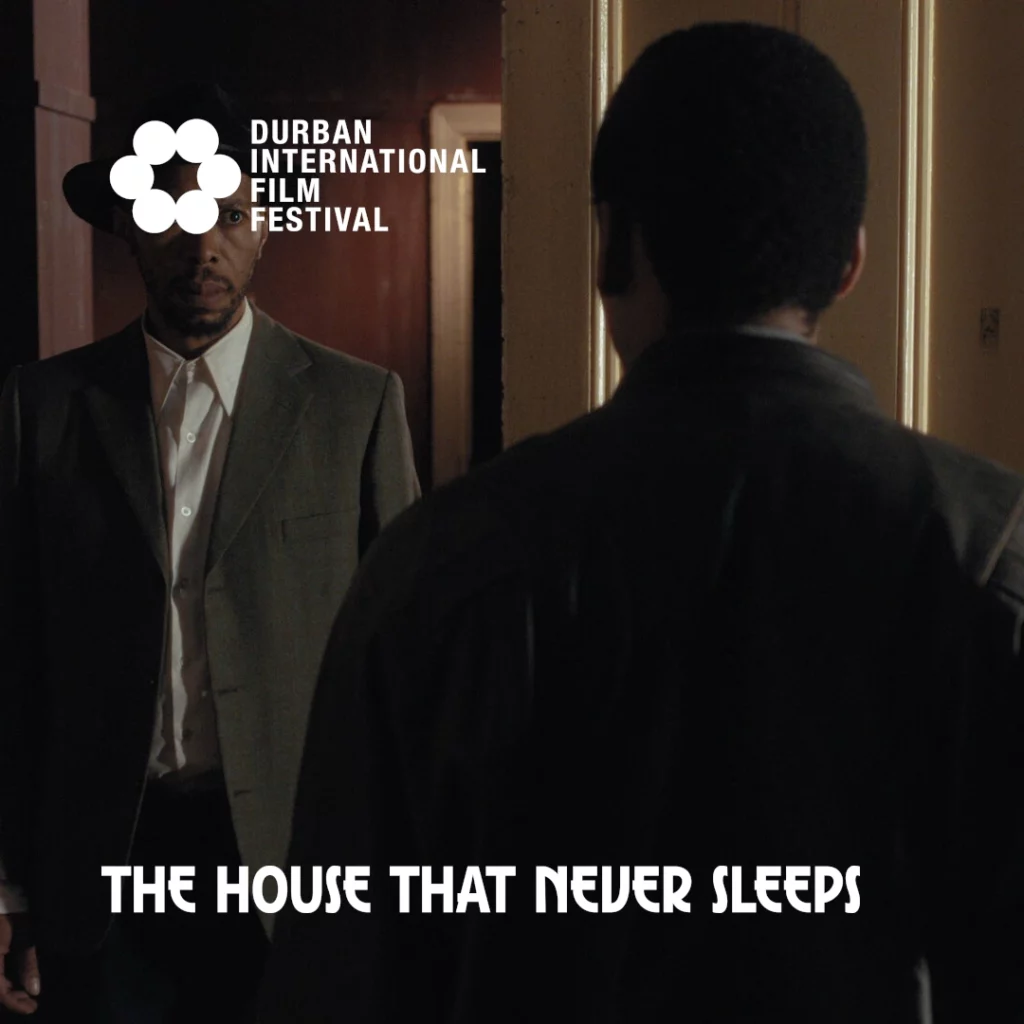Directed by Sean Mongie
There are films that entertain, and there are films that interrogate the very act of creation. The House That Never Sleeps is the latter. A high-concept fever dream of identity, authorship, and artistic sacrifice, wrapped in a slow-burning psychological sci-fi.
At the centre is Ayanda Mkhize, a pulp-fiction writer in his fifties who has long since traded his soul for output. His secret? A Cloning Box. Hidden behind a corridor of locked doors are iterations of himself,tired, worn-down clones who’ve spent years churning out books while he slowly disintegrates. The symbolism is breathtaking: Ayanda has not only outsourced his labour, he has fractured his very being in service of productivity. And now, even the clones are too exhausted to continue.
From the first scene, the atmosphere is unsettling, not in the jump-scare kind of way, but in the quietly claustrophobic way that makes your skin crawl. The house is dim,old, and feels haunted heavily with shadows and secrets. Paper is handmade, books are bound by hand, a tactile process that reflects Ayanda’s struggle to reconnect with the “why” of his craft. What do you do when you’ve poured all of yourself into your work and there’s nothing left?
The arrival of Sbu Dludlu, a bright-eyed, podcasting millennial fan, becomes the film’s narrative spark. Sbu is looking for the magic key to creativity, and he believes Ayanda has it, hidden inside the legendary Box mentioned in his first novel, The House That Never Sleeps. But what begins as a simple interview spirals into something far more existential.
This is not just a story about a writer meeting his fan. It’s a story about the cost of creation. Of how many selves we sacrifice to “stay relevant.” Of the prison one builds when passion becomes performance, and inspiration becomes obligation.
The genius of The House That Never Sleeps is in how it externalizes the inner life of a writer. The house isn’t just haunted , it’s inhabited by Ayanda’s former selves. You can’t watch this film as a creative and not feel seen. Maybe even attacked, gently, but uncomfortably.
Director Sean Mongie allows the story to simmer. This isn’t a plot-driven sprint, but a thematic excavation. The dialogue between Ayanda and Sbu feels like two generations arguing not just about storytelling, but about survival in an industry that demands everything from you and still wants more. At times, the film feels like a creative manifesto hidden inside a psychological thriller.
The Box itself ,the mythical device that promises inspiration and delivers reflection ,is a stroke of brilliance. Mirrors. Light. A sheet of marbled paper. It’s both empty and full. A metaphor so sharp it cuts. What if the magic we’re chasing isn’t a secret trick, but our own willingness to keep showing up, broken and searching?
The final act is surreal, metaphysical, and cathartic. Ayanda climbs into the Box one last time. The clone he creates is wrong ,hollow, bitter, violent. It’s what happens when you try to manufacture inspiration without meaning. The fight scene between Ayanda and his doppelgänger is symbolic of every internal war a writer fights between ambition and emptiness, ego and authenticity. And when Ayanda lets the clone live, it’s a surrender, not to defeat, but to truth.
In the end, he does the unthinkable. He opens all the doors. He frees the clones. He passes on the tools to Sbu, a symbolic passing of the baton to the next generation. The house that never sleeps ,the endless hustle, the constant creation, finally rests.
It’s rare for a film to be this honest about burnout, legacy, and the quiet grief of losing yourself to your own art.
The House That Never Sleeps is a film that will linger with artists and writers long after the credits roll. It makes you question your process. It makes you rethink the idea of productivity. And it asks ,if you gave all of yourself to your work, who would be left to come home?
Ayanda was the house. The clones were the rooms. And at some point, he forgot he could leave. But also, I wonder if that book actually exists!
Catch the film at DIFF: https://ccadiff.ukzn.ac.za/diff46/the-house-that-never-sleeps/
Screening Schedule:
18 Jul 17:00 Suncoast 6
21 Jul 12:00 Wushwini
22 Jul 12:00 KCAP
23 Jul 12:00 CAP Studios
24 Jul 09:00 Denis Hurley
24 Jul 11:00 Denis Hurley
25 Jul 12:00 Luthuli Museum
1 Aug 17:30 The Labia
1 Aug 17:30 The Bioscope
This review emanates from the Talent Press programme, an initiative of Talents Durban in collaboration with the Durban FilmMart Institute and FIPRESCI. The opinions expressed in this article are those of the author (Gloria Nkatha) and cannot be considered as constituting an official position of the organisers.

